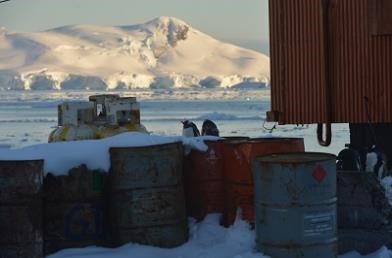The exploitation of the non-renewable resources of Antarctica inevitably entails environmental impacts. Mining development and mineral processing may lead to terrain modification due to construction of facilities, loss of terrestrial biota, alteration of local permafrost distribution, disposal of mining wastes, and possible generation of acid or toxic wastewaters. Severe damage or even loss of coastal ecosystems is probable. Discharge of untreated airborne effluents, such as particulate, would pollute the Antarctic ice sheet, an essential resource for providing baseline data on global pollution levels and climatic conditions. Emission of sulphur dioxide during mining operation might also inhibit lichen growth.
Spillage from oil extraction in areas of overlying moving ice may lead to the uncontrolled release of hydrocarbons under permanent ice. If oil is held within drifting ice, it can be carried to areas remote from the area of release. Any attempt to retrieve or treat with dispersants would be difficult or impractical.
Phytoplankton and marine animals are sensitive to oil spillage and wastewater discharge from mining development, and this has already impacted similar Arctic ecosystems.
Dredging for offshore surficial deposits gives rise to the disturbance of marine sediment and turbidity, and might pose serious local effects on benthic and pelagic marine organisms.
Floating oil on the sea is also deadly to most organisms which live on the surface or which come regularly to the surface. It poses a particular threat to penguins, as their water proofing and insulation properties would be destroyed by oil, and this usually results in mass mortality.
Oil-derived hydrocarbons are likely to be ingested directly or passed through the successive trophic levels in the food web, leading to bioconcentration to terminal consumers, such as birds and seals. All parts of the food web could be seriously affected.
For further interests, more information is available from The Antarctic of our sustainability hub.
![]()

A well-curated resources hub packed with information on environmental protection, climate change and sustainable development, and designed to inspire the public to take action to combat climate change.
